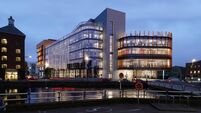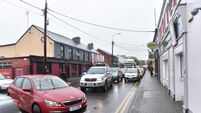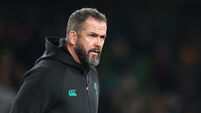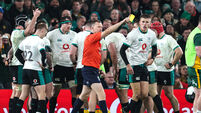Irish research takes flight as Norah Patten prepares for landmark suborbital mission

Dr Norah Patten, Irish aeronautical engineer and STEM advocate, will makes her maiden voyage with the International Institute for Astronautical Sciences and Virgin Galactic on a research trip IIAS 02 after years of preparation. Photo: Maxwell Photography
This month marks 25 years of continuous human presence in space. Innovations linked to that record include a vital heart pump and cancer treatment, as well as better understanding of bone density loss and much more.
Irish scientists and manufacturers are already involved in potentially ground-breaking discoveries and next year the first Irish astronaut takes that to another level.
Dr Norah Patten makes her maiden voyage with the International Institute for Astronautical Sciences (IIAS) and Virgin Galactic on a research trip IIAS 02 after years of preparation.
When her group put out the world’s first open call for science for a sub-orbital space flight, she said they had “an amazing response”.
Among the Irish projects is a sensor to monitor head impacts developed by Sports Impact Technologies in Wicklow, she told medical and school students at the Royal College of Surgeons Ireland this week.
In October, she and other astronauts tested this to see if it could better measure what happens to human brains in space. The test was in an aircraft designed to mimic zero-gravity or microgravity conditions, known as the ‘vomit comet’, she has previously said.
Another project saw them work with University College Dublin to test the impact of microgravity on seeds. “(They are) currently growing over in Canada, believe it or not,” she said.
She also highlighted the growing number of Irish tech firms contributing to space exploration from the ground. Dr Patten, an aeronautical engineer, will be joined on the space flight by fellow astronauts Kellie Gerardi and Dr Shawna Pandya, a Canadian physician.
Dr Pandya also spoke in Dublin, saying: “There is a whole lot of science to be done out there, and you might say ‘What can that do for Earth?’.”
Lessons on changes in ultrasound use, the human body or mental health can be applied to help anyone, including people in remote areas of our planet, she explained.
“Take an extreme case — a Martian mission. That is three to five years of not being able to hug your loved ones, three to five years of not being able to go outside and smell the grass or feel the wind,” she said.
Psychological screening is already used for astronauts, but she said the impact of “being alone on a planet for five years” is not yet known.
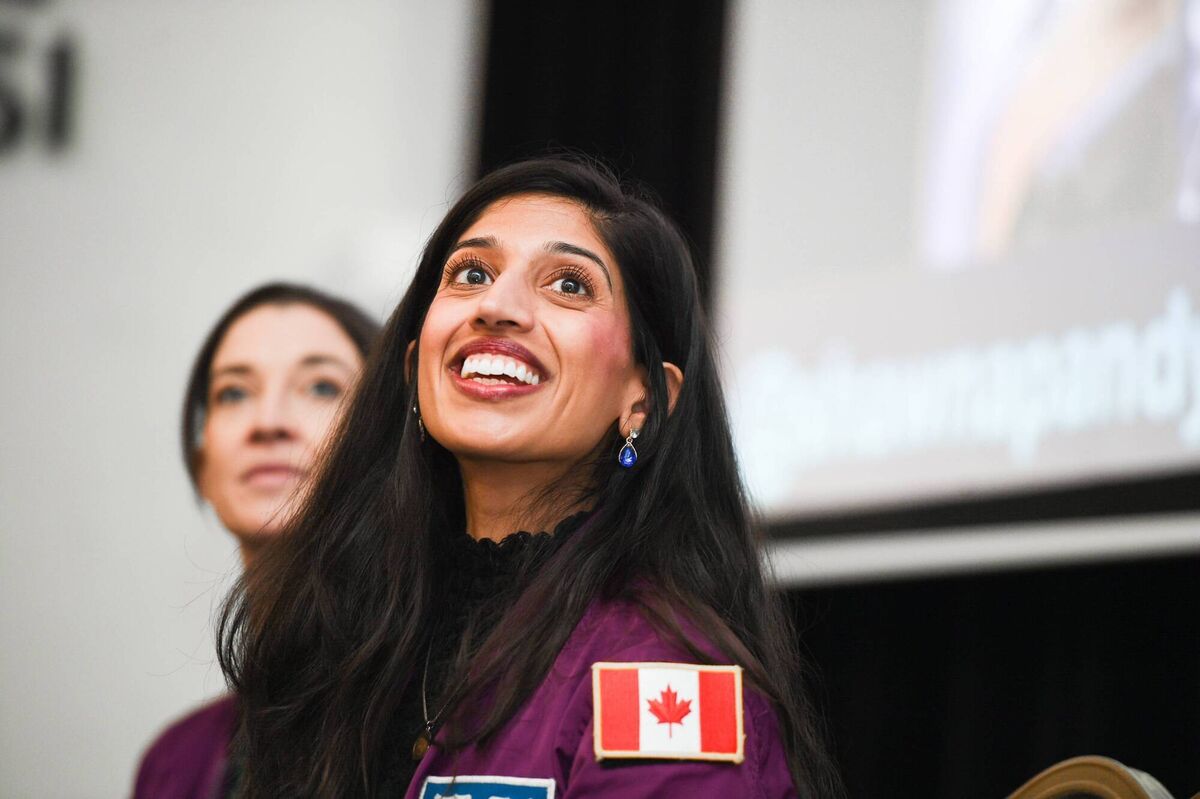
Doctors on space programmes are trained to treat radiation risks, decompression sickness, and the impact of microgravity or apparent weightlessness. Tablets are packed in individual Ziploc bags so they do not float away during an emergency on board.
There is also now a growing understanding of how fluid moves inside the body while in space. “It creates pockets of increased pressure including at the backs of our eyeballs,” Dr Pandya said.
She said it is yet not known why this happens even after about 60 years of space travel. “So if you someone asks you what did you learn from Dr Pandya’s talk? It’s that space is trying to kill you,” she said to nervous laughter from the 300-strong crowd.
The event organiser Dr Aamir Hameed, senior lecturer in RCSI's department of anatomy and regenerative medicine, has his own research interest in how space can help patients on Earth.
He told the after the event how learnings from space medicine projects can transform research for “terrestrial patients”.
He is in the early stages of collaborating with Dr Lisa McNamee, co-founder of Space Medicine Ireland, on studies related to how blood circulates through the body.
“Our project is not focused on heart pumps at the moment, it’s about studying haemodynamics in space conditions,” he said.
He could not say too much about it yet, but said: “We want to better understand haemodynamics in space so we can translate it into something which is useful for patients here.” He received an Enterprise Ireland grant for this, and Dr McNameea a grant from the European Society for Clinical Investigation.

He pointed to a collaboration between NASA, Dr Michael DeBakey and others, which led to vital changes in heart care. They created a tiny pump which keeps critically ill patients alive until a donor heart is available.
“It has a long history now,” he said. “If we’re working on a research project in space medicine, it’s not just focusing on the small cohort of people who want to go to space or astronauts who are super-fit.”
In July, the International Space Station (ISS) national laboratory wrote about how a biotech start-up uses its microgravity environment to test cancer drugs.
Encapsulate is testing miniature tumours in space to predict how they respond to treatment before a single dose is given to patients.
This month, marking the 25-year anniversary of humans continuously in space, Nasa said the ISS laboratory has hosted more than 4,000 experiments from over 5,000 researchers in more than 110 countries.
One study discovered women’s bodies are more resilient in space than men’s, something Ellen Ripley probably could have told them.
“We observed that males appear to be more affected by spaceflight, for almost all cell types and metrics,” the scientists wrote in the journal .
Professor Christopher Mason told the newspaper that this could be down to women’s bodies being adapted to tolerate major changes in pregnancy. These are only preliminary findings due to the small number of female astronauts. That number could change.
As Dr Norah Patten said: “Dream your own dreams and shoot for the stars.”




